Oats are a widely recognised as being a healthy alternative to other cereals in our daily diet, thanks to it not containing any gluten, a protein which can trigger an allergic reaction in some.
Consumers who choose health foods are usually willing to pay a premium, with the expectation that they are buying a quality product as well as a natural one.
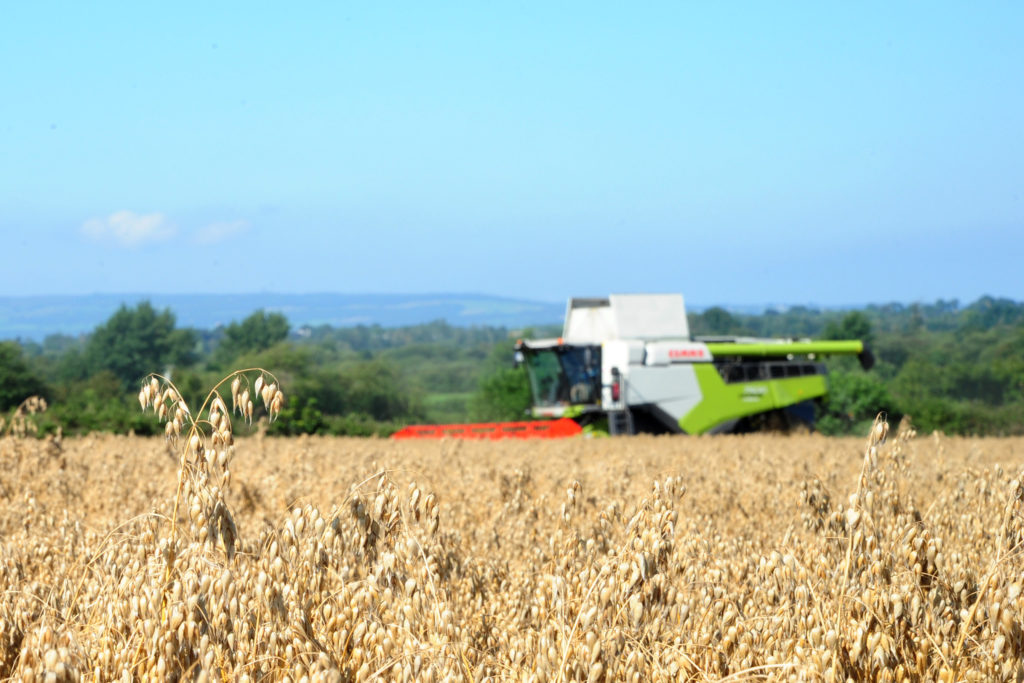
Glanbia Ingredients recognised this trend nearly a decade ago and set about supplying the demand for good quality oats with a scheme that saw the company supervise production of the crop from planting to harvest.
Contract oats crop
Now in its ninth season the provision of this significant ingredient to the health food sector continues to grow.
Contracts are placed with growers in the autumn, while Glanbia staff advise on management in the field and inspect the facilities being used, which includes the machinery.

Harvesting the crop is undertaken by a contractor working directly for Glanbia.
From the inception of the scheme, the task has fallen to Jeremy O’Toole of Tullow, who now runs five combine harvesters to harvest up to 3,500ac of the crop each year.
In addition to the combines, he also runs a fleet of chaser bins to take the harvested oats from the field directly to lorry trailers which are parked in the field, or at a convenient spot as close as possible to it.
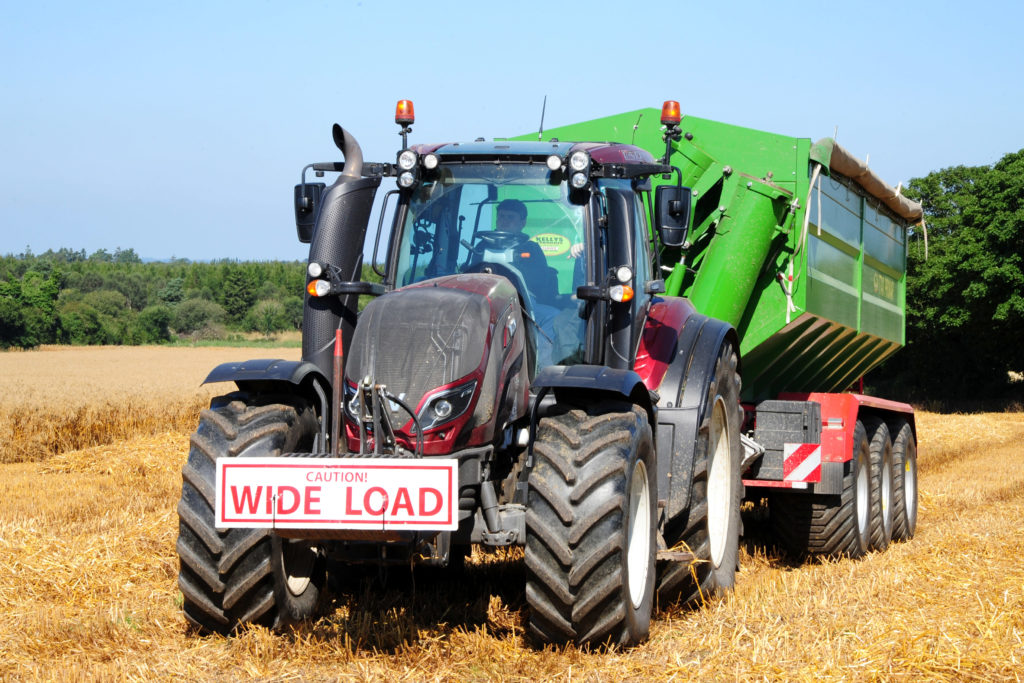
This system ensures that it is not handled or kept on farm, but is sent directly to the mill, eliminating contamination by either dirt or, and more importantly, wheat, barley or rye, all three of which contain gluten.
Jeremy has five combines in all, and they cut nothing but oats – no other crop passes through them, or the chaser bins.
Combining with Claas
Claas is the manufacturer of choice as he is familiar with the make and has no complaints either about the reliability or performance.
He is also impressed with the way they handle the straw, leaving it neat and intact, ready for the baler.
Take a look at the operation in the video below.
The machines involved include two Lexion 7500s, one Lexion 6600, a four-wheel-drive Tucano 570 and a smaller 440, this latter one being kept kept close to home for local growers.
The larger machines are all on Terra Tracs rather than wheels. These are considered kinder to the soil as well as allowing harvesting to continue on softer ground.
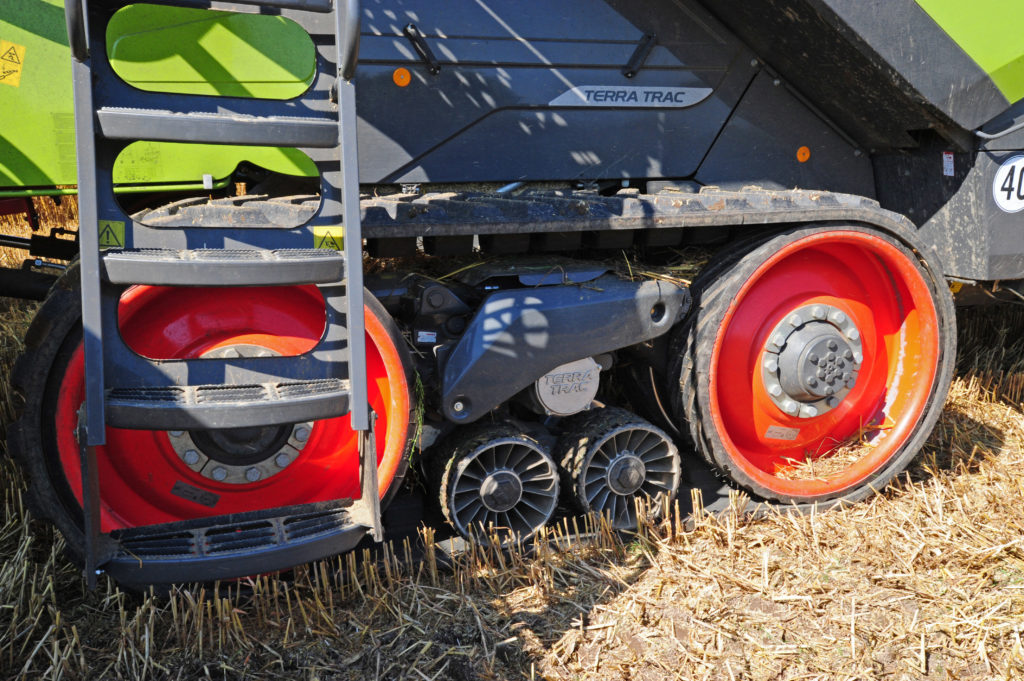
The other great advantage is that they keep the overall width of the combine down to road-friendly and gate-friendly dimensions.
They are still capable of travelling at 40kph, an important factor when they might do 2,000km annually, travelling between sites spread over eight counties.
While on the subject of width, the header on this particular Lexion 7500 is 7.7m (25ft). A rather modest attachment for the 462hp available.
Claas wanted Jeremy to fit a wider unit, but he points to the fact that some oat crops can reach five feet in height, which means a lot of straw will be passing through the threshing mechanism.
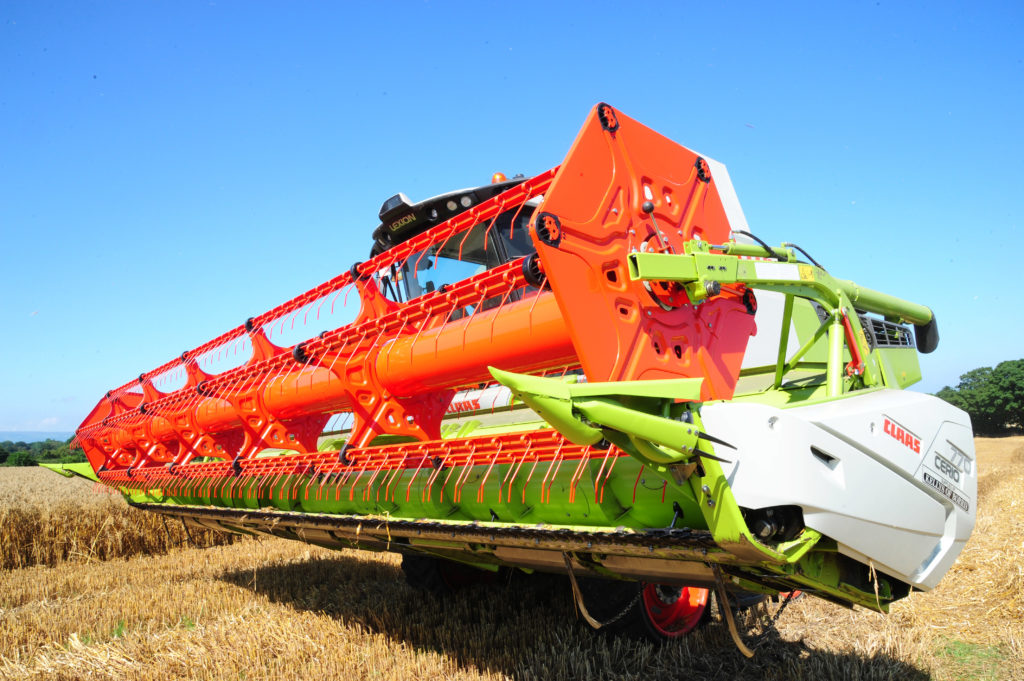
Oats are also prone to lodging, although this particular crop of Isabel was remarkably upright still, and a smaller header will enable the combine to cope better with difficult conditions.
Jeremy was tackling a 13ac field near Portlaoise on the day that Agriland visited. The field had been down to grass and was ploughed and disced last autumn.
Before sowing, the Glanbia quality assurance team had inspected the drill to ensure it had no residual seed left over from previous crops.

Thankfully the weather was cooperating although the soil was still moist from the wet spell. This did not deter the Lexion which made a remarkably shallow imprint on what was still soft ground.
The moisture content and yield is continuously monitored by the Cemos system and showed the seed coming in at a steady 16.6%. This was approaching noon and was likely to drop further during the day.
When the time comes to unload the combine’s tank, Jeremy calls up the chaser bin which pulls up under the spout.
Given the narrow header there is plenty of room between the end of the discharge auger and the combine itself.
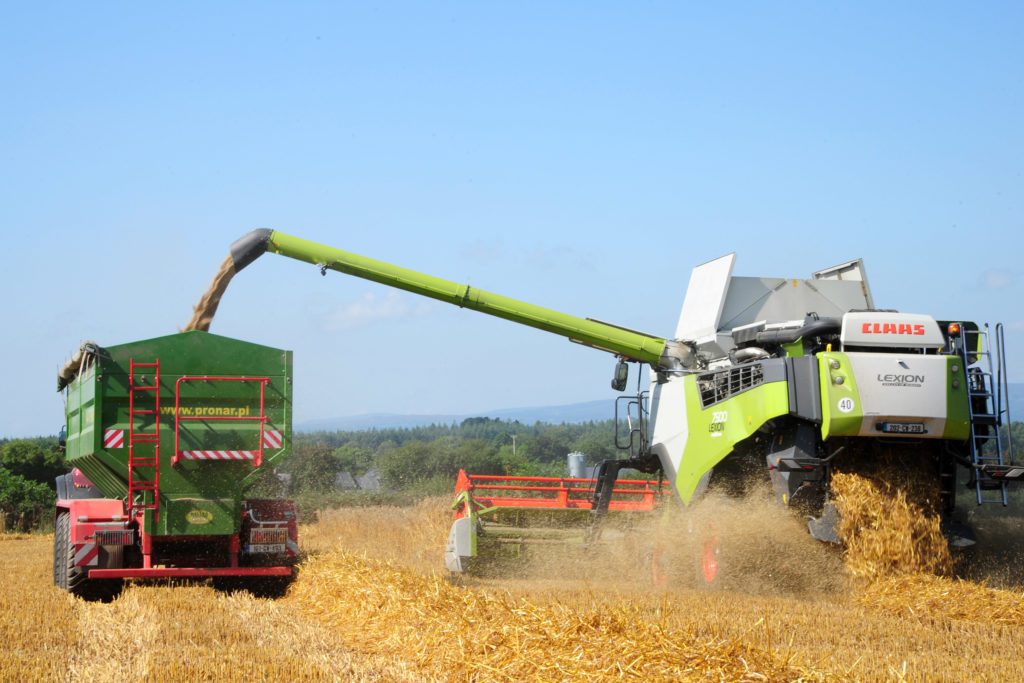
Emptying the 10,000L tank is remarkably quick, Claas quotes a figure of 130L/s, yet it seems quicker than that with this low density crop.
The chaser will usually take 2.5 to three loads to fill. Once full it will set off for wherever the lorry is parked for another rapid discharge.
Coordinating the lorries is usually a job for Jeremy and is critical to work rate. Any hold-up can mean the combine standing idle while it waits for an empty chaser bin to return.

Glanbia has obviously given a great deal of thought to providing what its customers require. The operation is a leading example of how farmers and their customers can work together to produce a premium product.
Essential to that is a dedicated quality control team linked to a specialist contractor, who runs a modern fleet of combines to ensure the crop is harvested in as clean and timely a manner as possible.
